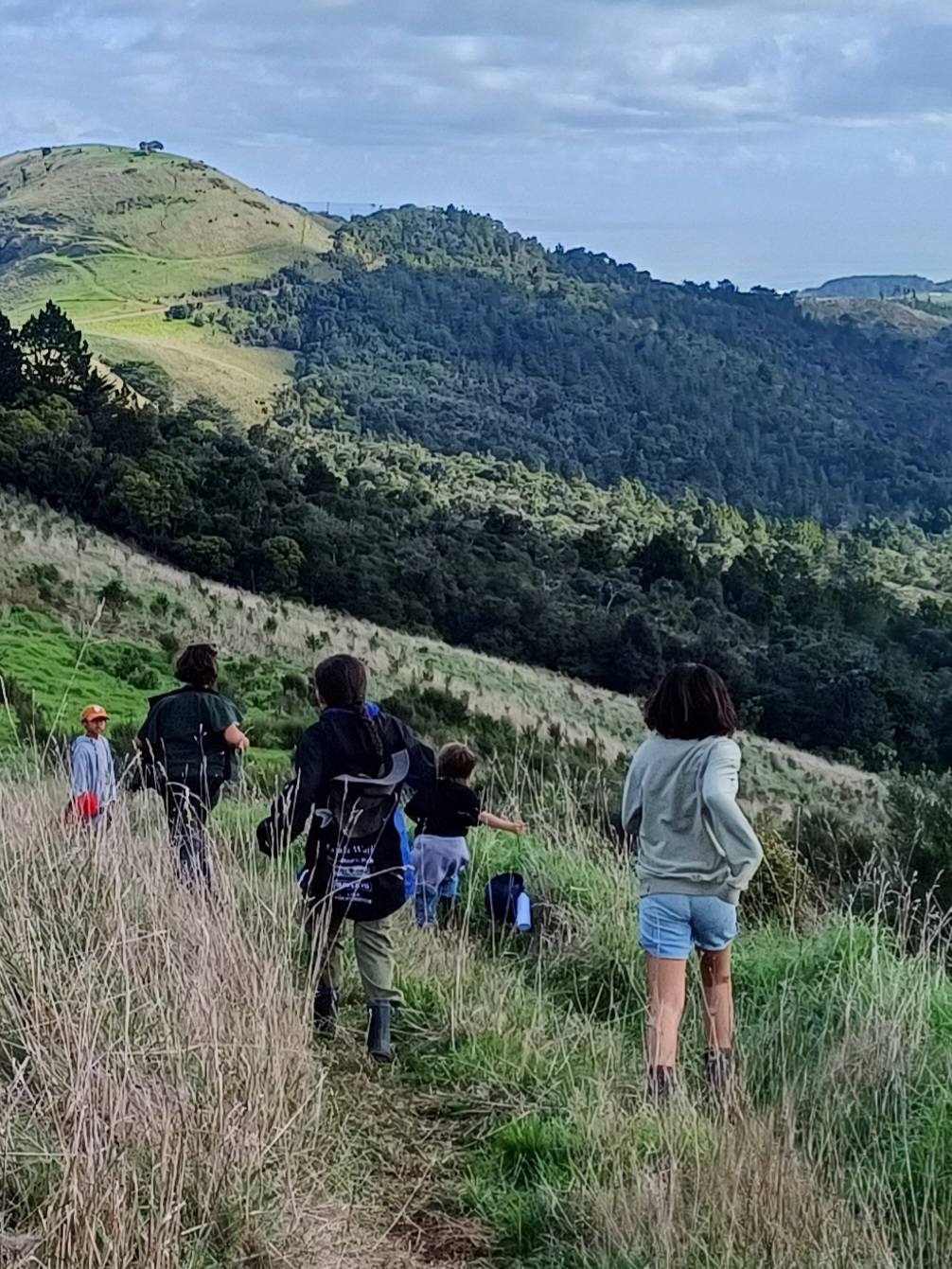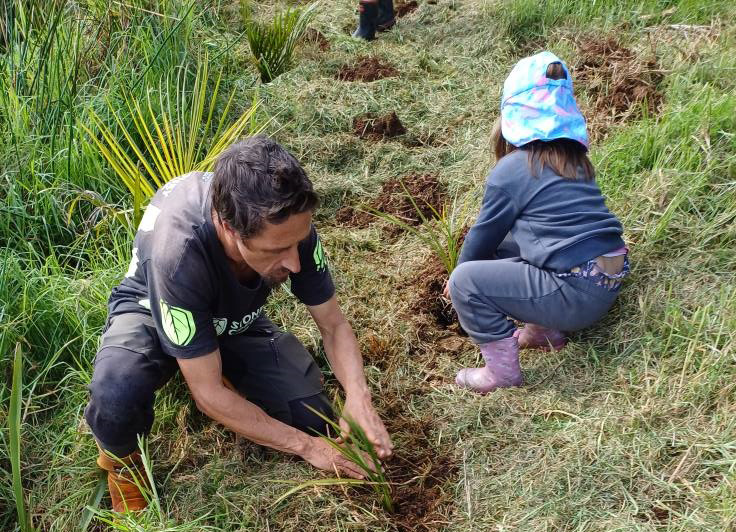Story
Aranga school takes part in wetland restoration
Tucked between the Waipoua Forest and Ripiro Beach, Aranga School may be small – but its vision for the future is big.
With just over a dozen students aged 5 to 12, the tamariki are reconnecting with their whenua through a hands-on wetland restoration project.
It’s all part of a wider effort to return hapū land to its natural state after it had been cleared for farming.
The project was initiated by the Waipoua Forest Trust, which saw an opportunity to regenerate a wetland on one of its reserves.
The Trust, equipped with expertise in wetland and riparian restoration and operating a nursery registered under the Kaipara Moana Remediation (KMR) programme, set out to align ecological goals with community empowerment and education.
Rachel Dunn – a parent of two Aranga students, Chair of the Aranga School Board of Trustees, and a Project Officer and Nursery Assistant with the Waipoua Forest Trust – helped connect the school to the wider effort. Through her combined roles, she helped launch the wetland restoration kaupapa.

Aranga is a special place, and the tamariki are involved in bringing it back to life.

The tamariki had support from the Waipoua Forest Trust team, including General Manager Oliver Knox, pictured.
The goals of the project are threefold: education, community engagement and biodiversity enhancement throughout the upper Kaihu River catchment.
The restoration aims to improve water quality and create a space where birds like the elusive Matuku-hūrepo (bittern) feel at home once again.
Tamariki have learned to identify native plant species, understand the principles of wetland restoration and get hands-on with planting.
The most recent planting day saw around 150 native plants go into the ground, including akeake, harakeke, nikau and ti kōuka.
The tamariki had support from the Waipoua Forest Trust team, including General Manager Oliver Knox, and the nursery crew.
“They already know so much!” Oliver said.
“They’re learning about native species, pests, and how to care for the land. It’s not just around getting their hands dirty; it’s about their identity and connection to the land.”
This is just the beginning. The wetland restoration is a three-year project, with more planting planned to supplement what’s already been done.
Jane Norman, the Enviroschools Facilitator who has supported the school throughout their journey, said:
“It’s been incredible to see the way Aranga School has embraced this kaupapa. The tamariki are so engaged, and the whole community is behind them. It’s a great example of what happens when learning is grounded in place, purpose, and people.”
For the Aranga community, this is more than a school project. It’s about hapū looking after their own, and tamariki growing up knowing they are kaitiaki of their land.
As Rachel put it: “We might be small, but we’re doing big things.”
